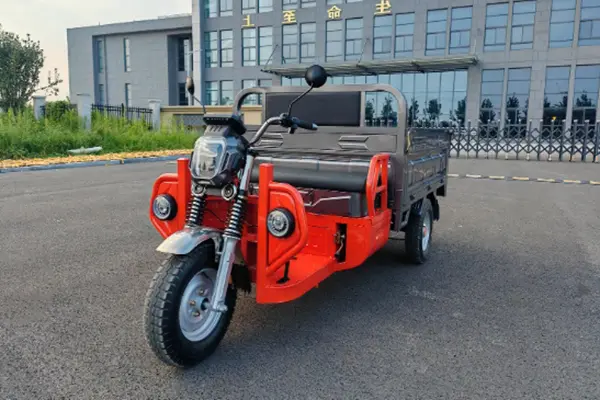Electric rickshaws, also known as e-rickshaws, are becoming increasingly common around the world. This article explores what makes these three-wheeled vehicles a popular and environmentally sound mode of transportation, and why their presence is expected to grow in the coming years. If you’re curious about a sustainable and efficient way to get around, keep reading to learn more about the fascinating world of the e-rickshaw.
What Exactly is an E-Rickshaw and Why Are They Gaining Popularity?
An e-rickshaw, at its heart, is a modern take on the traditional rickshaw. Imagine a three-wheeled carriage, but instead of being pulled by a person, it’s powered by electricity! These vehicles are also often called electric auto rickshaws or battery rickshaws. What makes them so popular? Well, for starters, they offer a cost-effective and convenient way to travel, especially for short-distance trips within urban areas.
Think of busy city streets. It can be tough to navigate with big cars. E-rickshaws are smaller and nimbler, making them perfect for zipping through traffic. Plus, as the name suggests, they run on electricity, which means zero tailpipe emissions in the immediate environment. This is a big plus for cleaner air in our cities and towns. People are increasingly aware of pollution, and e-rickshaws offer a welcome, environmentally friendly alternative to gasoline or diesel-powered auto rickshaws. They are quieter too, which contributes to a less noisy urban environment for both drivers and passengers.
How Does an Electric Auto Work Compared to Traditional Rickshaws?
The core difference lies in the power source. Traditional rickshaws were often pulled by people or sometimes used small gasoline engines. An electric auto, on the other hand, is equipped with an electric motor powered by a rechargeable battery pack. This battery pack stores energy, just like the battery in your phone or laptop, and provides the power needed to turn the wheels.
Compared to traditional auto rickshaws that run on gasoline or diesel, e-rickshaws are much simpler mechanically. They require less maintenance because they have fewer moving parts in the engine. There’s no need for oil changes, and the electric motor itself is generally very reliable. When it’s time to refuel, you simply plug the e-rickshaw into a power source to rechargeable the battery’s. This can be done at home or at a charging station. The instant torque provided by the electric motor also means a smoother and quicker start compared to their gasoline counterparts.

What Are the Environmental Benefits of Choosing Battery Rickshaws Over Auto Rickshaws?
The environmental benefits of battery rickshaws are significant. Auto rickshaws that use gasoline or diesel release harmful emissions into the air, contributing to pollution and impacting air quality, especially in densely populated urban areas. These emissions include greenhouse gases that contribute to climate change.
E-rickshaws, being powered by electricity, produce zero tailpipe emissions. This means they don’t directly release pollutants into the air where they are being used. While the electricity used to charge them might come from power plants that do produce emissions, the overall environmental impact is often lower, especially if the electricity comes from cleaner sources. By switching to e-rickshaws, cities can significantly reduce their carbon emissions and improve air quality for everyone. This makes them an environmentally friendly choice and a key part of creating more sustainable transportation systems.
Are E-Rickshaws a Cost-Effective Vehicle Option for Drivers and Passengers?
Yes, e-rickshaws offer a cost-effective mode of transportation for both e-rickshaw drivers and passengers. For drivers, the running costs are considerably lower compared to traditional auto rickshaws. Electricity is generally cheaper than gasoline or diesel, leading to significant savings on fuel. While the initial investment to buy an e-rickshaw might be comparable or slightly higher, the reduced running costs and require less maintenance often make them a more financially sound option in the long run. Governments in some regions even offer subsidy programs to encourage the adoption of electric vehicles, further reducing the initial cost.
For passengers, e-rickshaws often provide affordable transportation options, especially for short-distance travel. They fill a gap in public transportation, offering a convenient and low-cost way to commute within neighborhoods and connect to larger transportation hubs. This affordability makes them accessible to a wider range of people and cater to the needs of diverse communities.
What are the Key Features and Components of a Modern Electric Auto Rickshaw?
Modern electric auto rickshaws come with several key features. The most important component is the electric motor, which provides the power to move the vehicle. These motors are known for their efficiency and reliability. Another crucial part is the rechargeable battery, often a lead-acid or lithium-ion batteries. Lithium-ion batteries are becoming increasingly popular due to their longer lifespan and higher energy density, although lead-acid options can be more cost-effective upfront.
The frame of the e-rickshaw is typically made of sturdy metal to ensure durability. They are designed as a three-wheeler for stability. Other features include comfortable seating for passengers, lights for visibility, and basic controls for the driver. Some models may also include features like digital displays showing speed and battery level. Safety standards are also becoming increasingly important, with regulations focusing on the build quality and safety features of these vehicles.
You can see different designs and features in models like the EV5 Electric passenger tricycle or the EV31 Electric passenger tricycle. For cargo needs, the Electric cargo tricycle HJ20 and the Van-type logistics electric tricycle HPX10 showcase different configurations.
Where Can You Find E-Rickshaws and Who are the People Using Them?
E-rickshaws are a common sight in many parts of the world, particularly in developing countries and across India. You’ll often find them navigating the bustling streets of New Delhi and other major cities. They thrive in areas with limited public transportation infrastructure or where the existing public transportation doesn’t fully meet the needs of the local population. They are particularly useful for navigating narrow streets and congested areas where larger vehicles struggle.
The people using e-rickshaws are diverse. E-rickshaw drivers find them to be a source of income, offering a way to earn a livelihood. Passengers include daily commuters, shoppers, tourists, and anyone looking for a quick and affordable transportation option for short-distance travel. They are especially popular in areas with limited access to other forms of transport.

What are Some Common Concerns and Misconceptions About E Rickshaws?
While e-rickshaws offer many benefits, some concerns and misconceptions exist. One common concern relates to the battery range and lifespan. Early models sometimes had limited range, causing anxiety about running out of power. However, advancements in battery technology, such as the adoption of lithium-ion batteries, are addressing this issue, offering longer ranges and improved battery life.
Another concern can be the top speed of e-rickshaws, which is generally lower than that of cars or motorcycles. However, they are primarily designed for urban areas and short-distance travel where high speeds are not always necessary or safe. Misconceptions sometimes arise regarding safety, but regulations and improved designs are making e-rickshaws safer. Just like any vehicle, proper maintenance and adherence to traffic rules are crucial for safe operation. Concerns about e-rickshaw charging infrastructure are also being addressed with the development of more charging station options and the possibility of battery swapping.
Considering Buying an E-Rickshaw? What Should You Keep in Mind?
If you’re thinking about buying an e-rickshaw, there are several factors to consider. Think about your primary e-rickshaw uses. Will it be for passenger transport, cargo delivery, or personal commute? This will influence the type of model and features you need. Consider the battery type. Lithium-ion batteries offer longer life and range but might be more expensive upfront compared to lead-acid options. Evaluate the battery range and charging times to ensure they meet your daily requirements.
Look into the build quality and durability of the e-rickshaw. A sturdy frame and reliable components will contribute to a longer lifespan and lower maintenance costs. Also, check for compliance with local safety standards and regulations. Consider the availability of spare parts and after-sales service in your area. Finally, compare prices from different manufacturers and suppliers to find the best value for your money. Exploring options like the Electric passenger tricycle K04, Electric passenger tricycle K03, or even the cargo-focused Electric cargo carrier tricycle HP20 can give you an idea of the variety available.
What is the Future Outlook for the Market for E-Rickshaws Globally?
The future outlook for the market for e-rickshaws is very promising. Experts predict that the e-rickshaw industry is expected to grow significantly in the coming years. This growth is driven by several factors, including increasing awareness of environmental issues, rising fuel prices, and government initiatives promoting electric vehicles. As cities become more congested, the demand for efficient and eco-friendly urban transportation solutions will continue to rise.
Technological advancements in battery technology will further enhance the performance and affordability of e-rickshaws. The development of better charging infrastructure and battery swapping options will also contribute to their wider adoption. E-rickshaws are expected to play a significant role in the evolution of urban mobility, offering a sustainable and efficient way to move people and goods in cities and towns around the globe. Companies specializing in manufacturing, like our own with years in business, are focused on producing high-quality and reliable e-rickshaws to meet this growing demand.
How Can Businesses Benefit from Incorporating Electric Auto Rickshaws into Their Operations?
Businesses can gain several advantages by incorporating electric auto rickshaws into their operations. For last-mile delivery companies and logistics providers, e-rickshaws offer a cost-effective and environmentally responsible way to transport goods within urban areas. The lower running costs compared to gasoline or diesel vehicles can lead to significant savings over time. Their ability to navigate congested streets efficiently can also improve delivery times.
For small businesses involved in transport and delivery, e-rickshaws provide an affordable transportation solution. Ride-sharing companies in certain regions are also exploring the use of e-rickshaws for short-distance trips. Even tourism operators can utilize them for eco-friendly sightseeing tours. The Van-type refrigerated electric tricycle HPX20, for example, shows how e-rickshaws can be adapted for specific business needs. By choosing e-rickshaws, businesses can demonstrate their commitment to sustainability and reduce their carbon footprint, which can be a significant advantage in today’s environmentally conscious market.
In Summary:
- E-rickshaws are a modern, electric version of the traditional rickshaw, offering a cost-effective and convenient way to travel, especially for short distances in urban areas.
- Compared to traditional auto rickshaws, e-rickshaws produce zero tailpipe emissions, contributing to cleaner air and a healthier environment.
- The running costs of e-rickshaws are significantly lower due to cheaper electricity and reduced maintenance needs.
- Key components include an electric motor, a rechargeable battery, and a durable frame.
- E-rickshaws are widely used in developing countries, particularly in areas with limited public transportation.
- Advancements in battery technology are addressing concerns about range and lifespan.
- When buying an e-rickshaw, consider your needs, battery type, build quality, and local regulations.
- The market for e-rickshaws is expected to grow significantly due to environmental awareness and rising fuel costs.
- Businesses can benefit from using e-rickshaws for cost-effective and environmentally responsible operations.
By understanding the benefits and features of electric rickshaws, we can appreciate their growing importance in creating more sustainable and efficient urban transportation systems.
Post time: 01-08-2025




